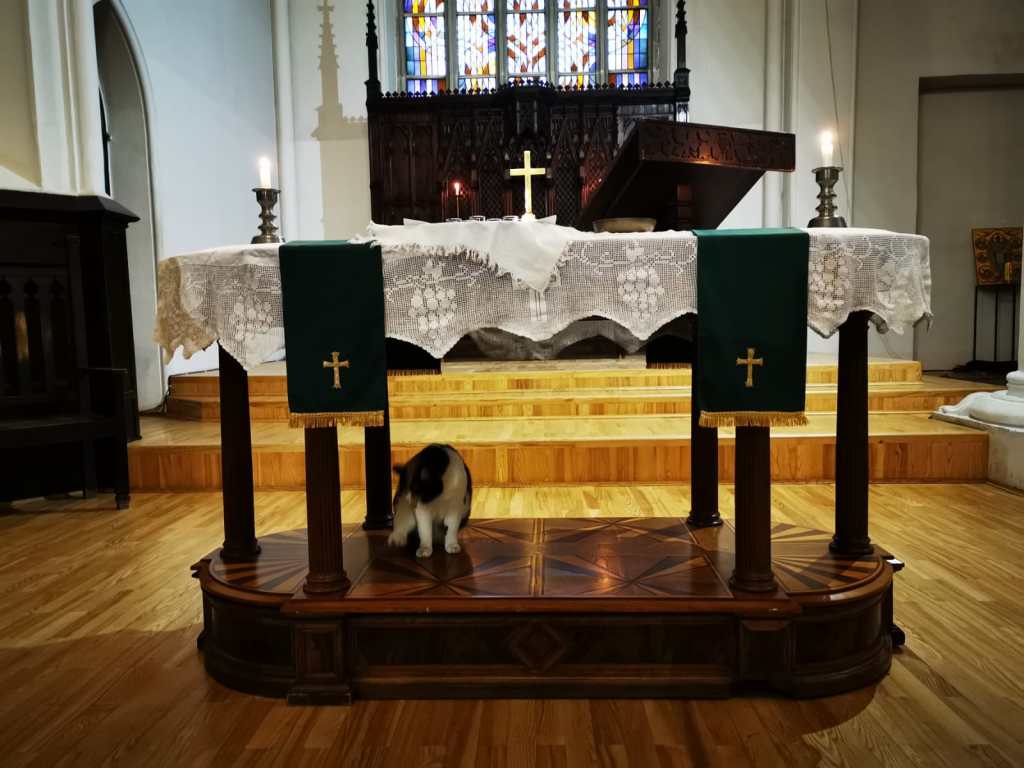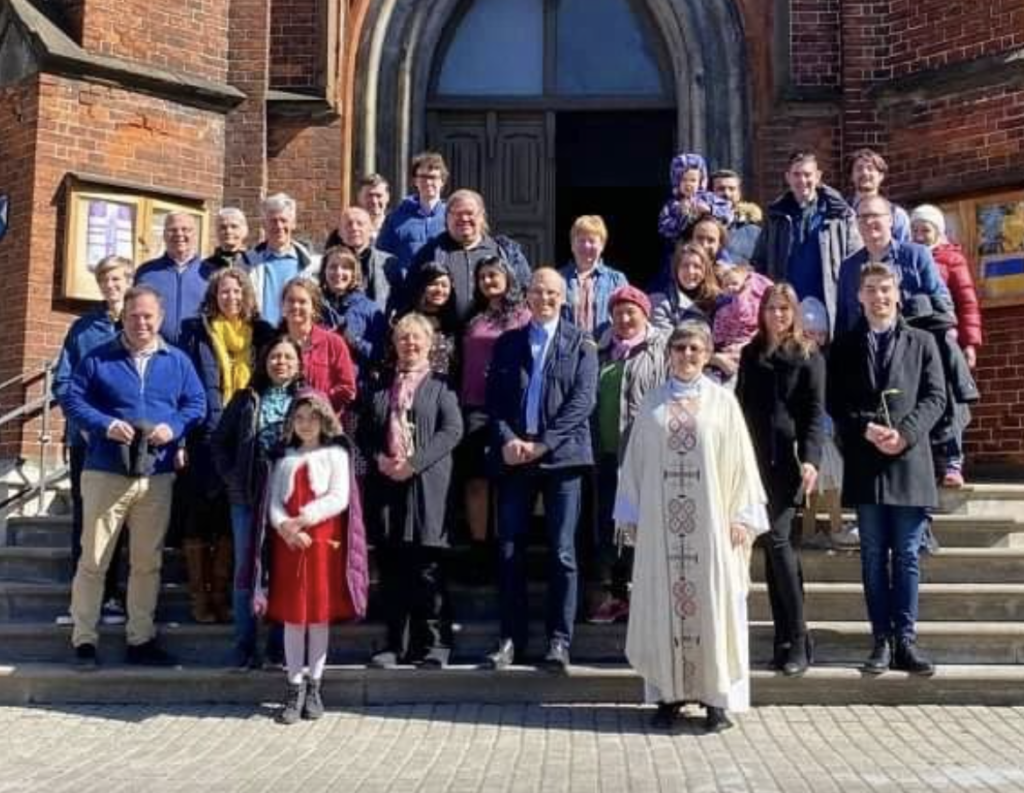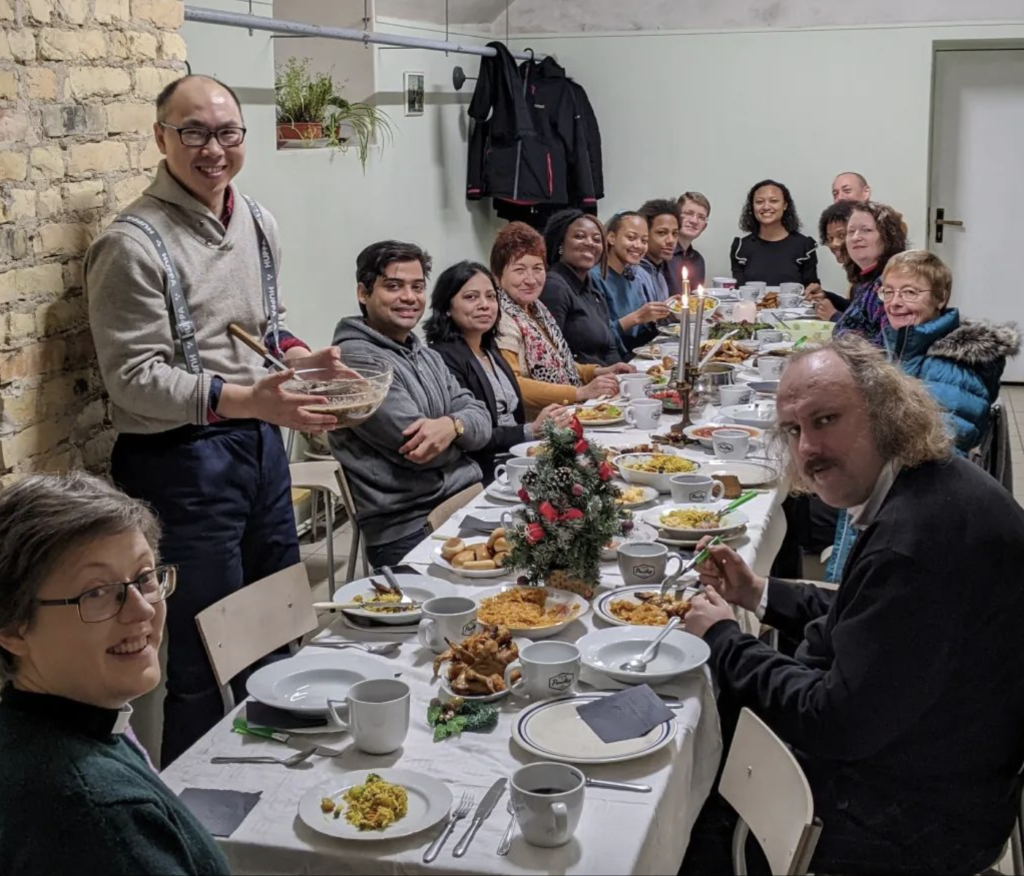Thoughts upon the homecoming of the altar
13.09.20., speech at Riga Luther’s Church
Valdis Tēraudkalns
This is an opportunity to express thanks to the Luther’s congregation for saving the old altar of the Anglican Church from likely destruction after our church was closed for worship in the nineteen sixties.
An altar is not the only thing that unites us. There are personal friendships, common quest to make Christianity understandable to contemporary people, understanding that Christian Church is not an answer to everything, but it should be an inclusive space where we are looking for answers to the big questions of life together. We belong to denominations that are heirs of Reformation – Lutherans and Anglicans. In 1938 Lutheran churches in Latvia and Estonia signed an agreement with the Church of England that allowed taking the Holy Communion in each other’s church. The leadership of the Lutheran Church in Latvia re-approved it in 1955, before the trip of the Archbishop Gustavs Tūrs to the UK. Starting from the nineties when the Anglican congregation in Riga was re-established, all our ministers have been Lutherans. One of the unrealized plans was to develop our congregation as an ecumenical Lutheran-Anglican community.
At first glance, the term “Anglicanism” suggests that it is either an “English faith” or an Anglophile group who like the English language and drink afternoon tea after the worship services. It is not so, because Anglicanism exists in many countries and most of the Anglicans are not British anymore. The most growing churches are in Asia and Africa.
The Anglican chaplaincy in Riga exists since the beginning of the 19th century. If it was then a congregation of British diplomats, merchants and sailors, then nowadays at least half of the regular worshippers are locals. From time to time there are also services in Latvian and in Russian. This is not something unique – for example, one of the Anglican congregations in Sicily consists of Italians who have joined Anglicanism. In Brussels (Belgium) Anglicans have bilingual services in English and French.
Anglican churches around the world are united by common past but otherwise they are very diverse. An altar is a visual witness to that diversity because in some congregations it has more candles on it than in Roman Catholic churches but in some just a movable table is used which is placed in front only when Holy Communion is administered. In the Church of England the word “altar” has been in more common use since the 19th century with the emergence of the Anglo-Catholic movement. Before that, terms like “communion table”, Lord’s table” or “holy table” or simply “table” were used. Common Worship, a liturgy of the Church of England, has the word “table”. After the Reformation, the custom was that minister stood at the north side of the communion table to read the service. Thus underlining the view that Christianity has no altar in a traditional sense of a place where sacrifice is made, since the sacrifice is only one – Jesus. Similar contrast between the table on earth and altar in heaven has been expressed in the American version of the Book of Common Prayer, in the prayer for dedication of the communion table : “Lord God (…), sanctify this table dedicated to you. Let it be to us a sign of the heavenly altar where your saints and angels praise you for ever.”

Putting this theme in a broader context, the question is how important the space and things in it are in our lives of faith. There are no correct and wrong answers to this, because we differ – for some people the space is not essential in worship, to others worshipping God in a specially designated place is important. Most of Christians probably stand in-between these opposite views. There is a paradox in Christianity – God could not be localised in one place yet at the same time we are a community of memory. Therefore, as in our everyday lives, material things help us to maintain these memories and to make them alive.
Both of our congregations are faced with a question what altar means to us today when all worshippers, including pastor, celebrate Holy Communion standing around the table or at the table facing each other. This is not something new – Luther in his introduction to the order of service wrote, “In the true Mass, among sincere Christians, the altar should not be retained, and the priest should always turn himself towards the people as, without doubt, Christ did at the Last Supper.” Then he, being cautious in reforms, added – “that, however, must bide its time.” This, sooner or later in different places has come. Such an arrangement of liturgical space points to the fact that God is not somewhere away, beyond the boundaries of our daily lives, but among us. We celebrate worship, every part of it, all together, not someone in our place or on our behalf. The purpose of the worship space is not to create a visual boundary between the everyday life and something that points us beyond the ordinary, between secular and sacred, but to the fact, that the coming of Christ destroys such a boundary.
Good worship is not what makes us forgetful of the ordinary with its joys and hardships but what makes us more aware of what happens around us. It also means finding Christ in the poor, despised, marginalised and oppressed. Like in the Gospel story on Zacchaeus where there are people who wanted to see Jesus, and it is important to ask whether we, as individual Christians or as the church in general do not obstruct the way.

